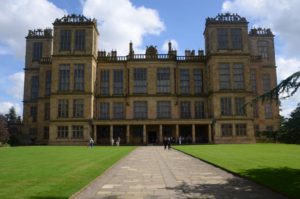
- This event has passed.
Historic Building workshop, Bricks and mortars, Hardwick Hall, Derbyshire
October 6, 2017, 10:00 - 16:30
£120.00Care and Repair of Historic Stone Structures and Plasterwork
Date: Friday 6 October 2017
When: 1000 – 1630
Where: Hardwick Hall Estate, Chesterfield, Derbyshire
Cost: £120.00 plus VAT (£144.00) to include seminar proceedings, all refreshments, lunch and comprehensive delegate pack
The day’s course will consider in depth three aspects of building conservation.
[custom_list style=”list-1″]
- The care and repair of historic stonework
- Understanding historic mortars and the use of lime in conservation.
- Historic plasterwork, its care and conservation.
- [/custom_list]
The venue has been carefully chosen as the two great houses on site represents very fine examples of late16th century stonework and decorative plasterwork. The Old Hall now mainly roofless was built between 1587 and 1596 by Bess countess of Shrewsbury. She then commenced the construction of the adjacent New Hall in 1590 using the architect Robert Smythson. The two buildings were in use as one complex but the New Hall was much grander and up to date in its design, the main façade boasting more glass than wall. The stone for both houses was quarried within the park, as is the material today for the onsite masons shop. The timber came from the estate and Bess also owned glass making workshops. The lead for roofing came from mines in the Peak District on the other estates owned by Bess.
The interiors were decorated with fine decorative plasterwork. The conservation of that in the roofless sections of the Old Hall being quite a difficult technical problem.
The day will include formal Power Point presentations, material handling sessions and first hand observations of some of the main buildings and their conservation problems.
Main themes
The History and Architectural Development of Stone Structures and their Care and Repair
Stone Buildings are some of our oldest surviving structures in the country and there are many from the medieval and later periods in need of sensitive care and repair. The use of stone was not just confined to the grand buildings and churches but was also used for a variety of ordinary domestic and vernacular buildings. The methods of quarrying, selection and use of stone in the past contributes much to the character and grain of our historic Cities, Towns and Villages.
A basic understanding of historic stone structures will be developed. The identification of causes of failure and the selection of appropriate repair and conservation systems including the selection of replacement stone and methods of fixing will be considered.
Care And Repair of Historic Masonry structures and Selection of Mortars
The first important stage of this process is to identify the sources which have caused the problems of decay to occur; these must be resolved before the stonework can be repaired. It is also important to understand the nature and function of historic mortars and the dangers of the use of modern cementitious products. The use of inappropriate mortars can result in the rapid deterioration of historic masonry and long term structural problems. The problems of water movement, salts, frost and the cleaning of masonry will be examined. The methods of re-pointing will also be considered, not only for aesthetic reasons, but to ensure the correct performance and durability of the new joint.
Historic Plasters
Most historic buildings were finished with plain lime plasters internally. Much of the wall and ceiling plaster has now been replaced with modern gypsum based materials in ordinary domestic buildings. Original plasters are becoming a rare survival. The problems of using modern materials on solid wall structures will be considered particularly in relation to damp and the development and movement of salts. The historic development of decorative plasters will also be examined briefly and its care and repair discussed. Hardwick Hall has fine surviving examples of decorative plaster work which are worth looking at in detail. The adjacent Old Hall which is in a semi- ruined state retains some elements of its internal decorative plasterwork. It demonstrates some of the conservation problems of stabilising what was intended to be protected within the building but now exposed to the elements.
Speaker
Kevin Stubbs BA(Hons) DipBldgCons(AA) IHBC CertEd
Kevin Stubbs is a Historic Buildings Consultant and comes with a background of education, archaeology and building conservation. He was Director of Archaeology for the Test Valley in Hampshire and later moved to Hampshire County Council to join the Historic Buildings Bureau, where he became the Principal Buildings Conservation Officer for the County. For eleven years he acted as the Director of a Conservation Centre and now runs his own Historic Building Consultancy and Training Company.
He advises on the repair and maintenance of all historic structures and provides training at all levels for the building conservation industry. This includes the development of historic building technology, traditional materials and hands-on craft training. Work for Local Government Authorities includes Conservation Area appraisals, historic building condition surveys and feasibility studies. He has provided training exercises with local communities to raise awareness of their village plans and local heritage interpretation documents and he has provided Traditional Skills Awareness Courses for a number of bodies.
He undertakes the Historic Analysis of buildings and produces: Statements of Significance; Method Statements; Impact Assessments and Specifications for the repair and conservation of traditional buildings.
He lectures for various CPD providers, Universities and national building conservation organizations including SPAB, RICS and the Weald and Downland Museum. Topics include: Bricks and Mortar; Lime, Plasters and Renders; Cob and Earth, Timber Frame and Stone Structures and Traditional Roofing.

